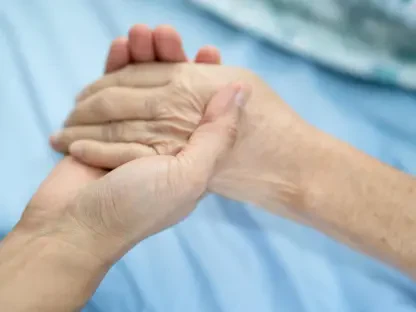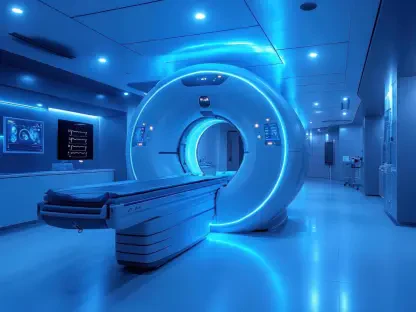What happens when a hospital ward transforms into a battleground of chaos—patients deteriorating, equipment failing, and staff stretched beyond capacity? This isn’t a hypothetical nightmare but a stark reality for countless nurses every day, as they navigate a healthcare system teetering on the edge, with professionals thrust into storms of unpredictability without adequate preparation. This pressing challenge demands a radical rethink of how nurses are trained, drawing inspiration from the meticulous planning of weather emergency preparedness to equip them for the turbulent realities of their profession.
The Critical Need for Change in Nursing Education
The urgency to overhaul nurse training has never been clearer. With a median nurse age of 50 and nearly 40% of the workforce considering leaving the profession, the strain on healthcare is palpable. Traditional education often paints an unrealistic picture—stable patients and fully staffed units—leaving nurses ill-prepared for the harsh truths of resource scarcity and overlapping crises. This gap not only risks patient safety but also fuels burnout, highlighting the need for a training model that mirrors the proactive, resilient strategies used to brace for natural disasters like hurricanes.
The stakes are high, and the consequences of inaction are dire. Post-pandemic challenges have only deepened the crisis, with shortages threatening to collapse an already fragile system. A transformative approach is essential, one that shifts focus from idealized scenarios to the gritty, unpredictable nature of bedside care, ensuring nurses are ready to face any storm with confidence and competence.
Gaps in Current Training Models
Current nursing education often falls short of preparing professionals for real-world demands. Many programs emphasize theoretical knowledge over practical, high-pressure situations, leaving graduates shocked by the intensity of actual clinical settings. The disconnect is evident when new nurses face sudden patient declines or communication breakdowns without the tools to navigate such chaos effectively.
This inadequacy stems from a curriculum that prioritizes controlled environments over dynamic challenges. Unlike emergency preparedness for weather events, which anticipates worst-case scenarios, nursing training rarely simulates the full spectrum of workplace stressors. Addressing this mismatch is vital to building a workforce capable of adapting to the unexpected with skill and poise.
Lessons from Weather Emergency Preparedness
Drawing parallels from weather emergency tactics offers a powerful framework for reimagining nurse training. Just as communities drill for tornadoes or floods by anticipating chaos and planning responses, nursing education must prepare for the inevitable storms of healthcare. This means embedding simulations of critical scenarios—think equipment failures or sudden staffing shortages—into regular learning routines to build instinctive, effective reactions.
Moreover, weather preparedness emphasizes continuous readiness through repeated drills and updated plans. Similarly, nurse training should adopt ongoing, contextual exercises that keep skills sharp and relevant. By integrating this proactive mindset, educational systems can ensure that nurses are not caught off guard but are instead primed to act decisively in any crisis.
Innovative Solutions for a Resilient Workforce
Transforming nurse training requires bold, practical steps, starting with the integration of cutting-edge technology. Simulation tools and AI-driven virtual patients can replicate the messiness of clinical environments, allowing nurses to practice rapid decision-making in a safe space. Studies show that immersive simulation training can boost decision-making accuracy by up to 30%, proving its value in bridging theory and practice.
Another key reform is prioritizing clinical judgment as a core skill. This critical thinking under pressure must be woven into daily education, not relegated to sporadic sessions. Updates to licensure exams reflect this growing emphasis, yet many programs still lag in implementation, underscoring the need for systemic change in curriculum design.
Finally, emotional resilience must be addressed alongside technical skills. Training should include strategies to manage workplace stress and incivility, equipping nurses to weather emotional storms as effectively as clinical ones. These combined efforts pave the way for a workforce that thrives amid adversity.
Voices from the Frontlines
Insights from the field paint a vivid picture of the training gap. A seasoned nurse recalled a harrowing first experience with a code blue, likening it to being caught in a tornado without warning: “Despite years of study, nothing prepared me for that moment of panic.” Such accounts reveal the shock of transitioning from classroom to clinic without sufficient real-world preparation.
Experts echo these sentiments, advocating for urgent reform. Dr. Tim Bristol, a prominent figure in nursing education, asserts that nurses face daily storms at the bedside while being trained for clear skies. His analogy to weather emergencies aligns with industry pushes for enhanced clinical judgment, reinforcing the call for training that mirrors the unpredictability of healthcare.
Reflecting on the Path Forward
Looking back, the journey to reform nurse training revealed a profound truth: preparation is the cornerstone of resilience. The stark realities faced by nurses in chaotic hospital wards underscored the inadequacy of traditional education, while lessons from weather emergency tactics offered a compelling blueprint for change. The voices of those on the frontlines echoed a shared urgency to close the gap between theory and practice.
Actionable steps emerged as the linchpin for progress. Embedding regular simulations, leveraging AI for tailored learning, and fostering continuous education became not just ideas but imperatives. Supporting emotional resilience stood out as equally critical, ensuring nurses were fortified against both technical and personal challenges. As the healthcare landscape continues to evolve, these strategies promise a future where nurses stand ready, equipped to navigate any storm with unwavering strength.









